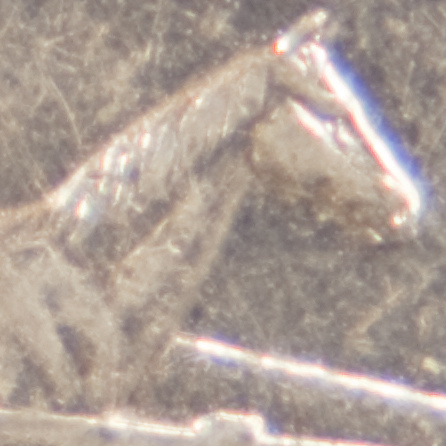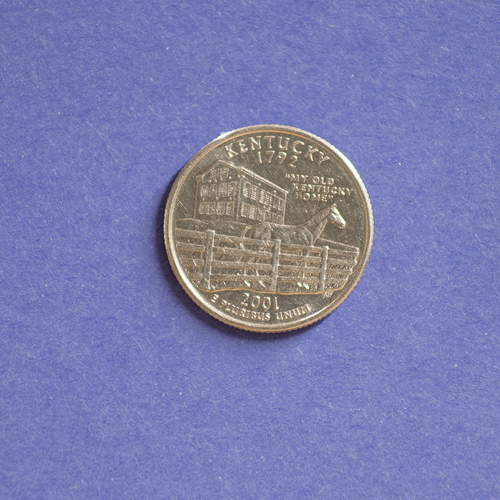April 15th, 2010
Canon 100mm f/2.8L Macro Lens Mini-Review
Note from Rich: Today’s post is written by my good friend Harley Pebley. He can be found on Twitter at @hpebley3 and on the web at hookedonlight.com.
By Harley Pebley
My good friend Rich Legg got a Canon EF 100mm f2.8L Macro IS USM lens from BorrowLenses a couple weeks ago. When he finished some portraiture work with it, he loaned it to me for a couple days to play around with it. I have three lenses in my bag: the two kit lenses that came with my XTi and the $80 Canon 1.8 50mm prime. I must say, I could get spoiled really fast with a $1000 piece of glass.
Due to schedule, I wasn’t able to spend as much time shooting with this lens as I would have liked, but I did get about 30 minutes to make a couple comparison images with the only change being the lens. The setup was a quarter on a table with a single strobe off to the side and the camera on a tripod shooting straight down, with the front of the lens about 12-18 inches from the table top. I was rushed enough I forgot to even take a setup shot. All these images are pretty much out of the camera with very minimal post-processing. The post-processing that was done was done exactly the same for all the images.
This image was taken with the rented lens.
And this image was taken with my 75-300 kit lens set close to 100mm. I didn’t have time to dial it in to be exactly the same size, but I think it’s close enough for a basic comparison. The setup was too close for this lens, so I screwed my +1 and +4 diopters on it to allow it to focus.
For side by side comparison here’s a section of the coin at 100% crop from both of the images above. The first one was taken with the L glass and the second one was with my kit lens. Notice the huge differences in sharpness and chromatic aberration.
Thinking the diopters might be contributing to the problems, I changed the setup to move the camera further from the subject so it could focus. I had to move the camera about 4 feet away and then zoomed in to the maximum of 300mm. Even with the extra zoom, the subject was significantly smaller than previously. This image is the same crop as the first two. You can see the subject covers about 1/4 of the surface area compared to the others, making the detail much harder to see. The CA is still there but the sharpness is a bit better.
And finally, for comparison, here’s a 100% crop, the same dimensions as the previous crops, from this last image.
As the images above show, there is a marked difference in quality between the two lenses. There’s also a marked difference in price. The kit lens (which isn’t available any more) and diopter set cost approximately $200. On the other hand, the f/2.8 macro lens retails for about $1000. The cost differential between these two solutions makes the services of a rental place like BorrowLenses highly attractive. The rental price for this lens is between $36 and $199, depending on the length of time. For an occasional need or to try out a particular model prior to purchase, this can be a very cost effective way of getting the high quality without the high price tag.











